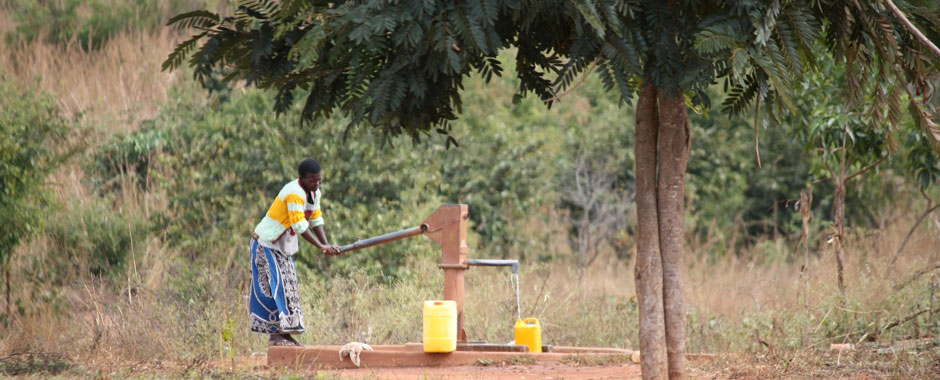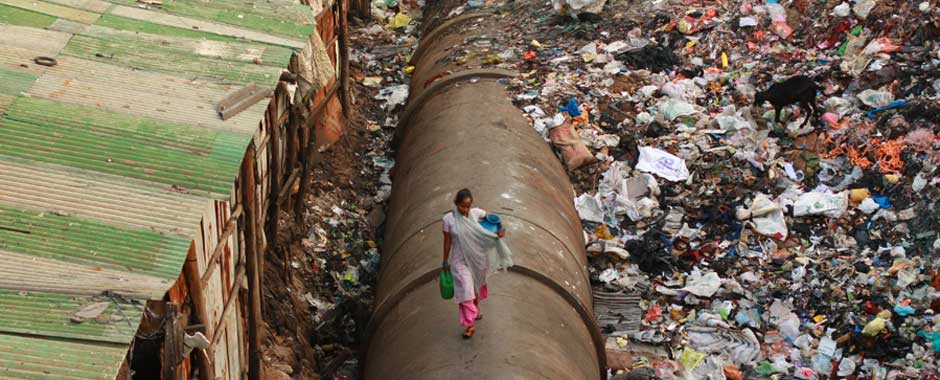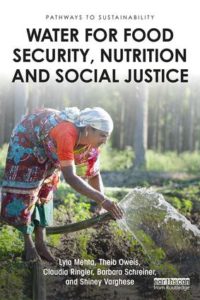On the 10th anniversary of the UN’s recognition of the human right to access water and sanitation, Lyla Mehta and Claudia Ringler reflect on the lessons from Covid-19 and the crucial but neglected links between water, food and health. The writers are among the co-authors of the book Water for Food Security, Nutrition and Social Justice.
We now know that handwashing with soap for 20 seconds can fight the spread of coronavirus. For many people, accessing water is as simple as turning on the taps in our kitchens and toilets. But for one third of humanity, handwashing remains out of reach.
2.5 billion people lack access to safe drinking water. Equally distressing, 4.5 billion people, or more than half of humanity, have no access to adequate sanitation facilities, which makes the spread of Covid-19 more likely.
July 2020 marks ten years since the United Nations General Assembly and Human Rights Council recognised access to safe drinking-water and sanitation as a human right. This right has now been incorporated into several national constitutions. It has enabled many poor and marginalised people to demand access to water and sanitation.
However, around the world, many vulnerable women and men routinely face violations to these basic rights, affecting their wellbeing, life chances as well as their nutritional and health status.
Part of the problem is that the agenda has focused narrowly on domestic access to water. This means that the wider challenges around accessing water for survival and livelihoods in the context of climate change are not being considered.
In the Global South, there have long been concerns about densely populated settlements, poor health systems, high rates of HIV and tuberculosis (TB), and chronic water problems due to mismanagement, lack of political will and lack of infrastructure investment. But as Covid-19 has spread rapidly in the world’s poorest countries, these concerns are now heightened and brought into the open once again.
Linkages between water, food and health
Water is needed for drinking, handwashing, cooking and sanitation but also to produce food. However, as we argue in our book ‘Water, Food Security, Nutrition and Social Justice’ , the way the human right to water is currently framed misses the food dimension: it does not consider water resource management and uses for agriculture, industry, and subsistence or livelihoods.

Breaking down the siloes across these divisions is crucial. It is now even more urgent under the Covid-19 pandemic, as access to handwashing facilities remains a challenge in many parts of the rural Global South.
Some key things would make a difference to public health and livelihoods. More integrated assessments of the use of water resources, including those that can be repurposed for handwashing, would help. Some water sources can have multiple uses, including food production and livestock rearing. And educational materials are needed on the benefits of handwashing and keeping water sources free from faecal matter, to improve safety.
The daily struggle for water and sanitation
When water is not available at home, the burden of collecting, storing, and managing water usually falls on women and girls in most families around the world.
In eight out of ten households lacking access to safe water, women and girls walk long distances and queue at taps to fill jerry cans and buckets. It is alarming that the UN’s definition of an ‘improved water source’ is a source which can be accessed within 30 minutes (round-trip collection time) – according to the Sustainable Development Goal 6 indicator on water and sanitation.
That such a situation is considered acceptable reflects the critical need to ensure that more women are part of the decision-making processes when such standards and targets are being set. Given the massive number of hours and the labour spent by poor and vulnerable women and girls in simply collecting, providing and managing water for their families, how can we expect them to follow hand-washing advice in their daily struggle to secure basic water for their households?
Water in informal settlements
In the rapidly urbanising contexts in the global South, vast populations live in slums and informal settlements. For example, in India, 29.4% of urban dwellers live in slums. In India’s largest city Mumbai, the commercial hub of India, 62% of the inhabitants live in slums.
Slums in this city, like in other cities all over the global South, lack reliable access to water. During the short time water is made available in these locations, there is a rush to access the source, making physical distancing difficult.

The quality of the water used in slums can also often be variable or poor, leading to gastrointestinal problems which can also reduce a person’s immunity and make whole communities susceptible to further disease.
The water collected is not enough to ensure handwashing with soap many times a day. Shared toilets in slums and informal settlements can further increase the spread of diseases. There is also recent evidence that Covid-19 is released in the excreta of affected people and has been detected in wastewater and sewage. This may put sanitary workers, manual scavengers and scrapheap foragers at high risk, as they tend to lack protective clothing and other protection.
Even in the United States, about 2 million people lack access to running water. Native American populations in some reservations are deeply affected by lack of access to water and sometimes poor water quality. Lockdowns and physical distancing measures make it difficult to share water sources, or driving distances to collect water, increasing their risks to Covid-10.
Why the pandemic forces us to prioritise rights to water and sanitation
After the Ebola crisis in West Africa, Sierra Leone and Liberia instituted public hand-washing stations with soap in public places such as bus stations. Rwanda launched a massive campaign responding to Covid-19 in March 2020, installing handwashing stations all over Kigali. While these are positive steps towards combating infectious disease, most public spaces in the Global South continue to lack safe handwashing facilities.
The struggles for water and sanitation by poor people have remained invisible for far too long in the eyes of governments, donors and elites. If some good can come of this terrible pandemic, it would be for governments and agencies to prioritise basic water and sanitation rights for all, targeting especially the poorest and most vulnerable. Covid-19 has clearly demonstrated, if a reminder were needed, that safe water and sanitation are crucial to saving lives.
An earlier version of this article was published on the Institute of Development Studies website.
Learn more
 Book: Water for Food Security, Nutrition and Social Justice
Book: Water for Food Security, Nutrition and Social Justice
by Lyla Mehta, Theib Oweis, Claudia Ringler, Barbara Schreiner, Shiney Varghese
STEPS Pathways to Sustainability book series
Routledge, 2019
